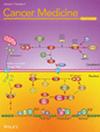Prognostic Significance and Therapeutic Potential of SERPINE1 in Head and Neck Squamous Cell Carcinoma
Abstract
Background
This study aims to elucidate the expression pattern of SERPINE1, assess its prognostic significance, and explore potential therapeutic drugs targeting this molecule.
Methods and Results
In this study, we delved into the variations in gene mutation, methylation patterns, and expression levels of SERPINE1 in head and neck squamous cell carcinoma (HNSCC) and normal tissues, leveraging comprehensive analyses of The Cancer Genome Atlas (TCGA) and Gene Expression Omnibus (GEO) datasets. The connection between the biological function of the gene and prognosis was scrutinized through immune infiltration and enrichment analyses. Concurrently, we assessed the potential therapeutic value of SERPINE1 through drug sensitivity analysis. It was observed that, particularly in human papillomavirus (HPV) negative HNSCC, SERPINE1 exhibited elevated expression levels, correlating with poorer prognosis. The infiltration levels of eight cell types, such as eosinophils, Tgd, and macrophages, showed a positive correlation with SERPINE1 expression, whereas infiltration levels of four cell types, including cytotoxic cells, B cells, and pDCs, displayed a negative correlation. Furthermore, copy number variations of SERPINE1 were primarily characterized by homologous amplification, positively correlating with its expression, while methylation showed an inverse correlation. The outcomes of drug sensitivity analysis underscored the potential of SERPINE1 as a therapeutic target.
Conclusion
Elevated expression of SERPINE1 in HNSCC is intricately linked with adverse prognostic outcomes and has the potential to influence the immune microenvironment. Subsequent investigations are imperative to fully elucidate the prognostic implications of SERPINE1 as a biomarker and to unlock its therapeutic promise as a target for intervention.


 求助内容:
求助内容: 应助结果提醒方式:
应助结果提醒方式:


